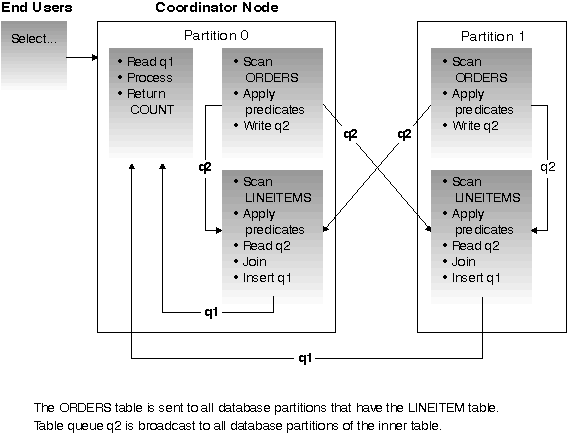

The following sections describe the join strategies that are possible in a partitioned database environment. The DB2 optimizer automatically selects the best join strategy depending on the requirements of each application. The join strategies are presented here to help you understand what is happening in each strategy. In the descriptions that follow, a directed table queue is one whose rows are hashed to one of the receiving database partitions. A broadcast table queue is one whose rows are sent to all of the receiving database partitions (that is, it is not hashed). In the diagrams for this section q1, q2, and q3 refer to table queues in the examples. Also the tables that are referenced are divided across two database partitions for the purpose of these scenarios. The arrows indicate the direction in which the table queues are sent. The coordinator node is partition 0.
For information on join dependencies, see the SQL Reference manual.
This parallel join strategy can be used if there are no equijoin predicates between the joined tables. It can also be used in other situations in which it is the most cost-effective join method. In this situation, one of the tables is broadcast to all the database partitions of the outer joined table. An example is shown in Figure 12.
Figure 12. Broadcast Outer-Table Join Example

In this join strategy, each row of the outer table is sent to one database partition of the inner table (based on the partitioning attributes of the inner table). The join occurs on this database partition. An example is shown in Figure 13.
Figure 13. Directed Outer-Table Join Example

With this strategy, rows of the outer and inner tables are directed to a set of database partitions, based on the values of the joining columns. The join occurs on these database partitions. An example is shown in Figure 14.
Figure 14. Directed Inner-Table and Outer-Table Join Example
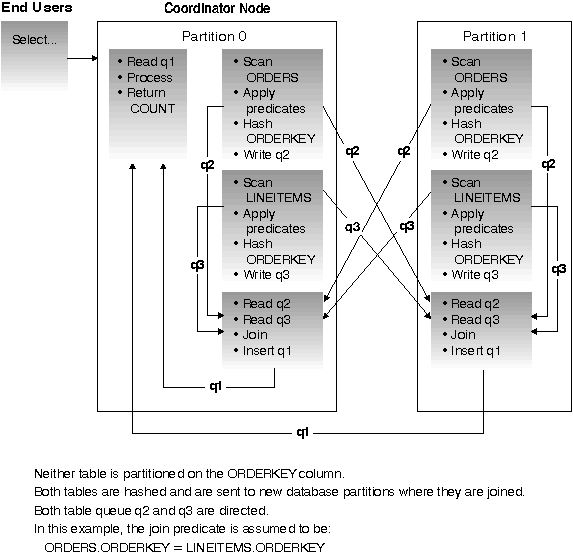
With this strategy, the inner table is broadcast to all the database partitions of the outer join table. An example is shown in Figure 15.
Figure 15. Broadcast Inner-Table Join Example
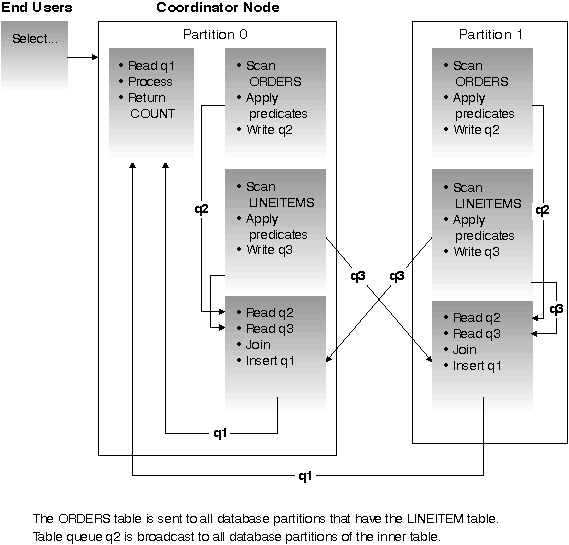
With this strategy, each row of the inner table is sent to one database partition of the outer join table (based on the partitioning attributes of the outer table). The join occurs on this database partition. An example is shown in Figure 16.
Figure 16. Directed Inner-Table Join Example
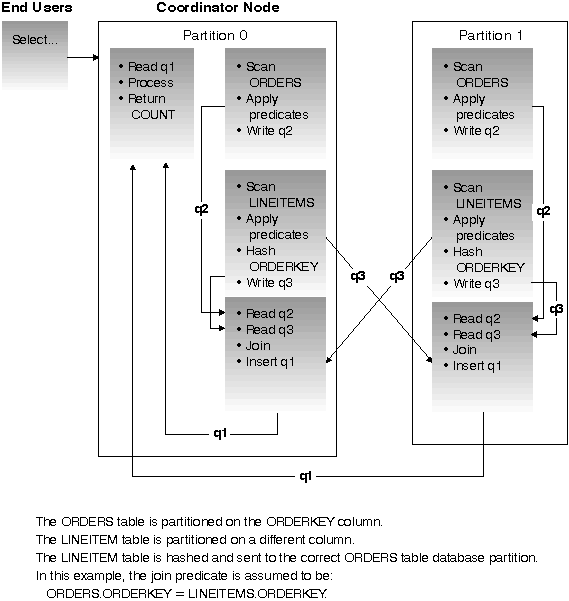
For the optimizer to consider a collocated join, the joined tables must be collocated, and all pairs of the corresponding partitioning key must participate in the equijoin predicates. An example is shown in Figure 17.
Figure 17. Collocated Join Example
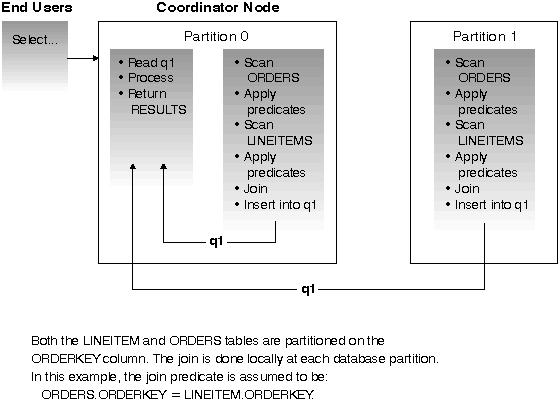
A table queue is used to pass table data from one database partition to another. Each table queue is used to pass the data in a single direction.
The compiler decides where table queues are required, and includes them in the plan. When the plan is executed, the connections between the database partitions initiate the table queues. The table queues close as processes end.
There are two types of table queues:
Asynchronous table queues are used when you specify the FOR FETCH ONLY clause on the SELECT statement. If you are only fetching rows, the asynchronous table queue is faster.
Synchronous table queues are used when you do not specify the FOR FETCH ONLY clause on the SELECT statement. In a partitioned database environment, if you are updating rows, the database manager will use the synchronous table queues.